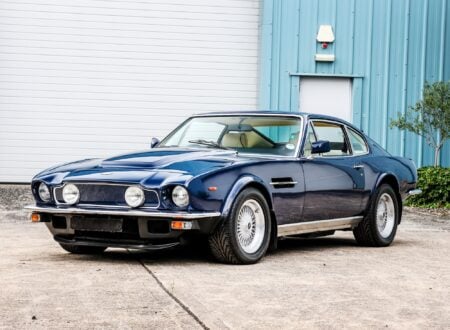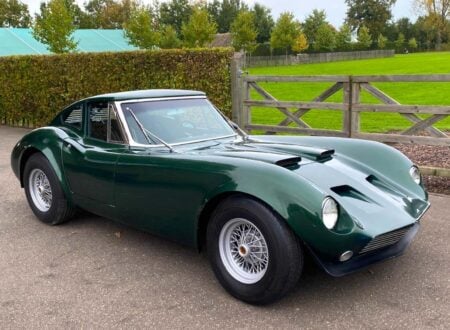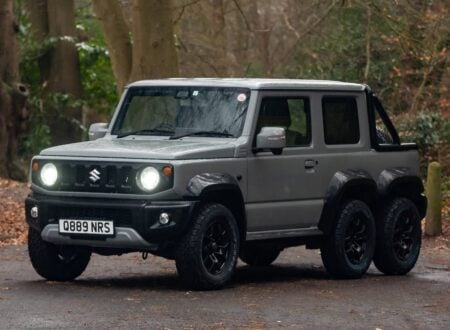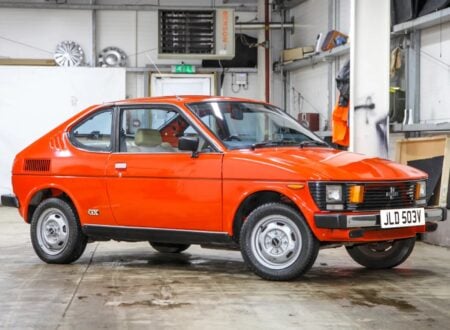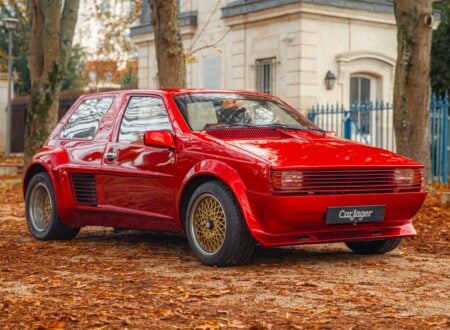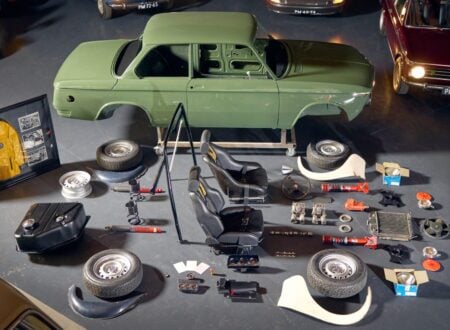Introduction
The Austin-Healey Sprite’s most famous and perhaps most endearing feature was its uncanny resemblance to Kermit the Frog: and in fact both the car and the puppet were created around the same time with Kermit making his first appearance in 1955 and the “Frogeye” Sprite entering production and making its first public appearance in 1958.
Despite the sports car and Kermit sharing a similarly cute “Frogeye” character to the best of our knowledge Kermit has never owned or driven one, but perhaps he will one day.
The Background to the Austin-Healey Sprite’s Story
In 1952 a number of British car makers, including Austin, Morris, Wolesley, Riley, and MG, were merged together to form the British Motor Corporation. This merger pretty much ensured the survival of a number of British car names that would otherwise have quietly disappeared but also came at the cost of a merging not only of the companies, but also of designs.
This essentially meant that BMC would make a number of pretty much identical models but put different name badges on them along with different grilles and trim, thus rationalizing production and new model development costs. It was into this environment that the Austin-Healey Sprite was created, but in its first iteration it was created as a unique model, only to be “badge engineered” for the Mark II and subsequent models.
The Austin-Healey partnership also occurred in 1952 beginning at the London Earls Court Motor Show of that year. Leonard Lord of Austin was trying to find the right car for Austin to build and export to the United States to make lots of lovely money with while independent sports car maker Donald Healey had rather sensibly created a sports car based primarily on commonly available and affordable Austin parts.
Donald Healey’s car was called the “Healey 100” and when Leonard Lord saw it and realized the potential he and Donald Healey got together over dinner and entered into a partnership to build the cars under the Austin banner as the Austin-Healey 100. It was this partnership that paved the way for the creation of the smaller and much cheaper Austin-Healey Sprite.
Image: Leonard Lord (left) and Donald Healy sitting in an Austin-Healey 100/4.
Although the Austin-Healey 100 was a beautiful high performance car it was also expensive and BMC management understood that they needed a budget model which would sell in much greater numbers.
To this end, Donald Healey’s team were involved in creating a smaller sports car based on parts available from existing Austin and Morris models. Not only were they to create a new low cost small sports car but also to pioneer unibody construction rather than using a body on chassis design like the Austin-Healey 100.
The Austin-Healey Sprite’s Story Begins -1958 to 1961
The mechanical components that the Austin-Healey Sprite was to be built around began with the Austin “A Series” engine of 948cc capacity and fitted with twin SU 1⅛” carburetors producing 43hp @ 5,200rpm with torque of 52lb/ft @ 3300 rpm.
This engine was the same one as used in the diminutive Austin A35 which might not seem to be an inspiring vehicle unless you realize that the A35 van was a favorite of Formula 1 legend James Hunt.
The gearbox was a stock four-speed BMC unit with synchromesh on the top three gears while the excellent rack and pinion steering came from the Morris Minor 1000.
The suspension came from the Austin A35 which had a fully independent front with coil springs and lever shock absorbers and a half-elliptic leaf spring live axle at the rear, which for the Sprite was to have top links for stability.
These mechanical parts were the foundation handed over to Healey’s body and chassis designer Barry Bilbie. Bilbie was tasked with creating a rigid open sports car unibody, and with making it affordable.
His design was to be the first mass-production sports car with a unibody and his basic design was used for the Austin-Healey Sprite (and its badge engineered sibling the MG Midget) right up to the end of production of the last model.
Image: The Austin-Healey Sprite unibody chassis.
Barry Bilbie’s unibody design was based around front and rear bulkheads joined by “Top Hat” sill sections, reinforced by body stiffeners and the central transmission tunnel, all mounted onto a floorpan. The rear suspension forces were directed through the floorpan while the front suspension and engine/transmission were supported by two front chassis legs (meaning the design was not a full monocoque).
To obtain the right levels of stiffness the unibody was designed without an opening boot lid, so access to the boot was obtained by lifting the driver and passenger seats forward and then reaching into the luggage space.
This was somewhat inconvenient but at least meant that there was no boot lid for thieves to prise open, although unless the car was fitted with a hard top it could not be secured in any event. The bonnet/hood was the complete opposite with the wings and bonnet made as one piece and hinged at the rear so the whole thing lifted up to make access to the engine as easy as it gets.
The styling of the Sprite was done by Healey’s body designer Gerry Coker and the little car was made as aerodynamic as possible, complete with retracting headlights that would fold flat when not in use. As originally conceived the Coker styling was impressively clean and aesthetic.
Unfortunately the retracting headlights were one of the first casualties of BMC cost cutting and so the Sprite was given its Kermit the Frog lookalike “eyes” along with a nice friendly smiling front grille. Americans seem to have decided that the car looked rather like Jiminy Cricket from the movie “Pinnochio” and so they decided to call it a “Bugeye”.
BMC’s other effort at cost cutting involved reducing the thickness of the steel in structural areas of Barry Bilbie’s design for the first prototype. Upon testing the prototype at the Motor Industry Research Association facility however it was discovered that the prototype made with thinner than specified steel suffered from deformation and so the BMC engineers had to concede that Bilbie had got it right and they restored his original design specifications.
The little Austin-Healey Sprite was first made public on the 20th May 1958 in Monaco, in the wake of the Monaco Grand Prix. The car was made to be a modern successor to the Austin 7, a car that such notables as Bruce McLaren (of McLaren Racing Team) and Graham Chapman (of Lotus Cars) had both begun their motorsport careers with. The Sprite was said to be sufficiently small that “A chap could keep one in his bike shed”.
While the performance was not earth shattering, with its low seating position and diminutive proportions the Sprite felt fast and sounded fast, making it rather a lot of fun to drive. Its top speed was 82.9mph and it could accelerate from standing to 60mph in 20.5 seconds, so acceleration was not exactly neck snapping. The Sprite was quite miserly on fuel delivering no less than 43 miles to the imperial gallon (36 mpg US, 6.6 liters per 100 km).
While these performance figures might not be impressive by comparison with expensive high powered sports cars the little Sprite was an affordable way to get into motorsport at a club level just as the Austin 7 had been.
A bit of an industry was established making performance parts for the Sprite, notably by people such as John Sprinzel, Speedwell Motor Company and WSM. BMC were very quick to promote the car for motorsport by entering the 1959 Alpine Rally and achieving a class win. Following on from that was a trip “across the pond” to the United States where they achieved a first, second, and third trifecta class win at Sebring.
The Sebring Sprites
The 1959 Sebring Sprites were specially prepared by Donald Healey’s son Geoffery at Healey’s Cape Works in Warwick. the cars were fitted with larger SU 1¼” carburetors and prototype Dunlop disc brakes all around along with wire wheels.
The gearboxes for the cars were racing close ratio straight cut crash boxes and the cars were fitted with dual plate clutches. All this effort paid a handsome dividend in terms of publicity for the Austin-Healey Sprite in the United States and elsewhere.
Following on from the demand created by the Sebring success Donald Healey began offering a special “Sebring” modification package for the Austin-Healey Sprite targeted at those who wanted to use their car in competition.
These cars were fitted with a new Girling hydraulic braking system with “Type 9″ 8½” front disc brakes and 8″ drums at the rear. From 1960 onwards this work was being done by the Healey Speed Equipment Division at a small London workshop in Grosvenor Street.
A variety of kits and special equipment for the Sprite was made such as the Speedwell GT version which featured an aluminum coupe body created by aerodynamicist Frank Costin and made by Williams & Pritchard.
John Sprinzel featured prominently in these cars having been joint partner with Graham Hill in Speedwell Performance Conversions Ltd. before he went to work for a while in charge of the Healey Speed Equipment Division before leaving them and setting up his own business located in Lancaster Mews in December 1960.
The Sprinzel Sebring Sprites became much sought after at that time and have become a rare collector’s item in the decades since.
The Austin-Healey Sprite Mark II and MG Midget – 1961 to 1964
The Austin-Healey Sprite Mark II was introduced in May 1961 and although it was not mechanically greatly different to the original Sprite it was given a significantly different appearance, an appearance that the Sprite would keep until production ended in later years.
The Kermit the Frog look was gone and the Mark II was given conventional front wings/fenders with the headlights mounted in them, and a separate bonnet/hood. This made access to the engine less easy but made the look of the car much less controversial.
At the rear the car had conventional rear wings and a boot lid, making the process of stashing and retrieving things from the boot much easier and not at all like descending into a small dark cave as had previously been the case.
The provision of an opening boot required some structural changes including squared off rear wheel arches to provide enough steel for adequate stiffness of that rear part of the car. Front brakes were discs while at the rear were drums, and wire wheels were available as an optional extra.
The engine was kept the same except for the fitting of larger 1¼” SU carburetors and delivered 46hp @ 5,500 rpm with torque of 53 lb/ft @ 3,000rpm. This engine was only fitted until October 1962 when it was changed to a 1,098cc version of the Austin “A Series” producing 56hp @ 5,500rpm and torque of 62lb/ft @ 3,250rpm.
For the Mark II the four speed gearbox was changed and the new one was fitted with “baulk ring” synchromesh on its top three gears, first being left without back in those days when the British were rather averse to giving a driver synchromesh on first gear.
From its inception this version of the Austin-Healey Sprite was also sold “badge engineered” as the MG Midget, resurrecting a name that had been used on MG models since the 1930’s. The MG Midget would go on to outsell the Sprite by a significant margin despite the fact that the two cars were pretty much identical except for the badges on them.
The Mark III Sprite and Mark II MG Midget – 1964 to 1966
The Mark II Austin-Healey Sprite and its near identical sibling the Mark II MG Midget were subject to subtle changes and were manufactured from 1964-1966. The windscreen was changed and given quarter lights to go with the wind-up windows and external door handles with locks were also fitted.
The suspension of the car remained mostly the same but with the change to semi-elliptic rear leaf springs for the rear axle and elimination of the top links. This gave the car a more comfortable ride although possibly at the cost of some of the directness in the handling.
Engine power was slightly improved being 59hp @ 5,750rpm with torque of 65lb/ft @ 3,500rpm.
The Austin-Healey Sebring Sprite at Le Mans 1965
BMC was very active in motorsport during the 1960’s with the Morris Mini becoming a dominant force on the international rally circuit. Even the ponderous Austin 1800 was rebuilt into a rally car for the 1968 London to Sydney Marathon (Australia) rally and achieved second and fifth places despite being up against Australia’s V8 “supercars” in the form of a few GM Holden Monaros and Ford Falcon GTs.
But neither the Morris Mini nor the “land crab” Austin 1800 were suitable candidates for a crack at the 24 Hours Le Mans, for that job BMC decided to create a special version of the Austin-Healey Sprite (aka the MG Midget).
The bodywork for the Le Mans cars was created by Barry Bilbie using the new wind tunnel facility at Austin’s Longbridge factory. The sleek little aerodynamic body was made at Healey’s Warwick workshops in best of British “Birmabright” aluminum alloy, an alloy that was used on everything from the humble Land Rover up to the James Bond Aston Martin.
The engine of the Le Mans cars was increased in capacity to 1,293cc and rather substantially tweaked by the mavens of BMC’s Courthouse Green workshop so by the time they were done it produced almost double the power of the factory road car at 110 hp.
This engine was mated to a purpose-rebuilt MGB gearbox, some of which were fitted with an external fifth gear overdrive. The end result of all this boffin creativity was a car that could make 150 mph on Mulsanne Straight and that could keep up its performance for the full 24 hours of the Le Mans race. The Austin-Healey Sebring Sprite, driven by Paul Hawkins and John Rhodes, achieved a 12th place outright at the 1965 Le Mans.
Competition prepared Austin-Healey Sebring Sprites would go on to achieve class wins at Sebring driven by such notables as Steve McQueen, Sir Stirling Moss, and Bruce McLaren. The would also compete in many other events such as the Targa Florio.
The Mark IV Sprite and Mark III MG Midget – 1966 to 1971
The Mark IV Austin-Healey Sprite and its Mark III MG Midget stablemate were introduced in October 1966 at the London Earls Court Motor Show and had some substantial changes from the previous models. One of the most welcome was that the removable soft top was replaced with a folding soft top that did not need to be removed and stowed in the boot/trunk. The interior was also upgraded and gained the luxury of reclining seats.
The engine was changed to the same basic engine as used in the high performance Mini Cooper but in a slightly down-tuned version, which BMC said was to ensure better reliability. Many enthusiasts would of course have had their cars brought up to a higher state of tune as an aftermarket improvement.
The new engine was still an Austin “A Series” but with a capacity of 1,275cc producing 65hp @ 6,000rpm and torque of 72lb/ft @ 3,000rpm. At this stage of automotive history however the US was regulating emissions and so that larger engine was to be fitted with power sapping smog pumps etc.
Also in response to regulatory moves in the US the brake and clutch hydraulic systems were improved. In 1969 the car’s electrical system was changed from the dynamo and 12 volt positive earth system of the previous models to having a much preferable alternator and 12 volt negative earth electrical system. The cars were also fitted with reversing lights. This was the last year the Sprite would be exported to the United States.
1968 saw the merging of BMC into the British Leyland aglomerate with the result that the Mark IV Austin-Healey Sprite and Mark III MG Midget were given some stylistic changes in 1970. The appearance of the Sprite and Midget was brought even closer together so they really were best described as “Spridgets”. These cars had new badge work and the body sills were painted matte black, something that actually gave the car an even more eye catching stylishness. The 1970 cars were also fitted with new steel wheels made to look a bit like alloy wheels.
In 1971 the agreement between Donald Healey and Austin expired and so cars made after that time ceased to carry the Austin-Healey name, but were instead branded as the Austin Sprite for the last 1,022 cars manufactured. The MG Midget would continue in production until 1980.
Conclusion
The Austin-Healey Sprite was a “Little car that could” and it proved to be an unpretentious truckload of fun, an affordable entry into the world of motorsport, and an affordable sports car that a chap could not only keep in his bike shed, but a car that he could get a great deal of enjoyment from tweaking and fixing.
This was a car that really gave an owner a portal into customizing and personalizing their car to really make it everything that their imagination, and wallet, could accommodate. Over the years this hasn’t changed and the Austin-Healey Sprite, whichever model is chosen, still provides the same potential for simple enjoyment whether you just want to drive it, or personalize it, or use it for motorsport in club or higher level competition.
The old saying says “Good things come in small packages”, an Austin-Healey Sprite is a lot of car in a rather small package.
Images courtesy of RM Sotheby’s, BMC, and British Leyland.


